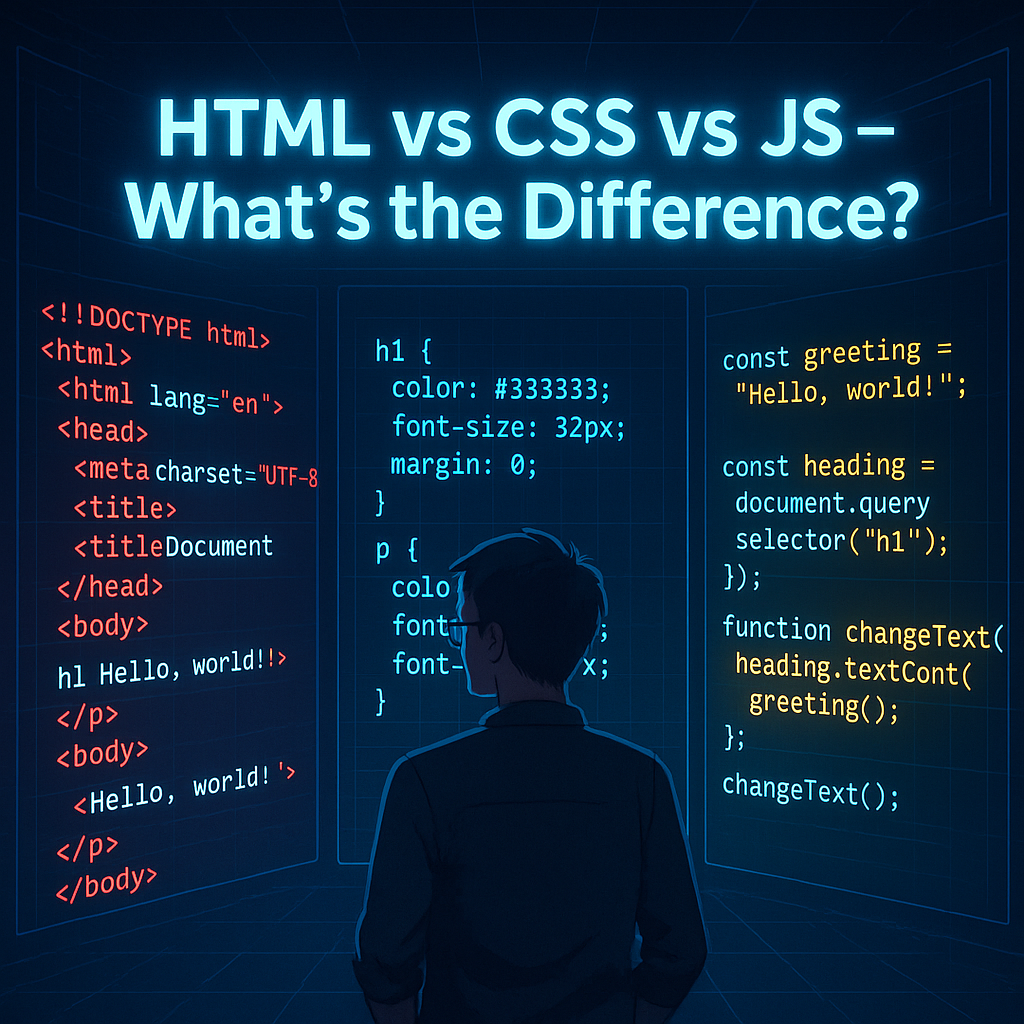If you’re just stepping into the world of web development, you’ve probably heard terms like HTML, CSS, and JavaScript thrown around. These three technologies are the core building blocks of any website.
But what exactly do they do?
How are they different from each other?
And how do they work together?
Let’s break it all down in simple, easy-to-understand language.
1. What is HTML? (HyperText Markup Language)
HTML is the structure of a webpage.
Think of it like the skeleton of a human body.
It gives your website structure — text, images, buttons, links, headings, etc.
🧩 Example:
<h1>Welcome to My Website</h1> <p>This is a paragraph.</p>
Without HTML, there’s nothing to see on a website.
Key Features:
- Creates headings, paragraphs, lists, forms, tables
- Uses tags like
<div>,<p>,<img>,<a>, etc. - Defines the content (not the design or behavior)
2. What is CSS? (Cascading Style Sheets)
CSS is the style of a webpage.
Think of it like the clothes and makeup you put on the skeleton.
It makes your website look beautiful and customized.
🧩 Example:
h1 {
color: blue;
font-size: 30px;
}
This code changes the heading color and size.
Key Features:
- Colors, fonts, spacing, layout, animations
- Controls design responsiveness for different devices
- Can be written inline, internal, or external
3. What is JavaScript?
JavaScript is the brain or logic of a webpage.
Imagine clicking a button and getting a popup — that’s JavaScript.
It brings your site to life by making it interactive and dynamic.
🧩 Example:
document.querySelector("button").onclick = function() {
alert("Button clicked!");
}
This shows an alert when a user clicks a button.
Key Features:
- Handles user actions (clicks, scrolls, typing)
- Controls dynamic content (like sliders, forms, animations)
- Works with APIs, real-time updates, and more
How Do HTML, CSS & JavaScript Work Together?
Here’s a simple way to understand it:
| Part | Role | Analogy |
|---|---|---|
| HTML | Structure | Skeleton |
| CSS | Style | Clothes & Makeup |
| JavaScript | Behavior | Brain & Movement |
They all combine to create modern websites and web apps.
Real World Example: A Simple Button
Here’s how all three work together:
HTML:
<button>Click Me</button>
CSS:
button {
background-color: green;
color: white;
padding: 10px;
}
JavaScript:
document.querySelector("button").onclick = function() {
alert("Thanks for clicking!");
}
You now have a styled, interactive button!
Which One Should You Learn First?
- Start with HTML – understand how to structure content.
- Then learn CSS – to make your content look nice.
- Finally, learn JavaScript – to add smart functionality.
This is the natural order of learning frontend development.
Final Thoughts
HTML, CSS, and JavaScript are like the Trinity of Web Development.
Each plays a critical role — and together, they power every website you use today.
Whether you’re building a portfolio, a blog, or the next big web app —
mastering these 3 technologies is your first step!

